An adult or mature Monstera has adult leaves, bears fruits, and flowers. It takes approximately 1 ½ years and up to 8 years for the slowest growers to reach maturity in the wild (natural habitat).
We’ve insight into mature Monstera plant (adult plant), including growing habits, how leaves may look, and care (light, temp., soil, watering, humidity, repotting, fertilizer, etc.).
You will get a general overview, not to a specific mature Monstera species like Monstera deliciosa, Peru, or other species.
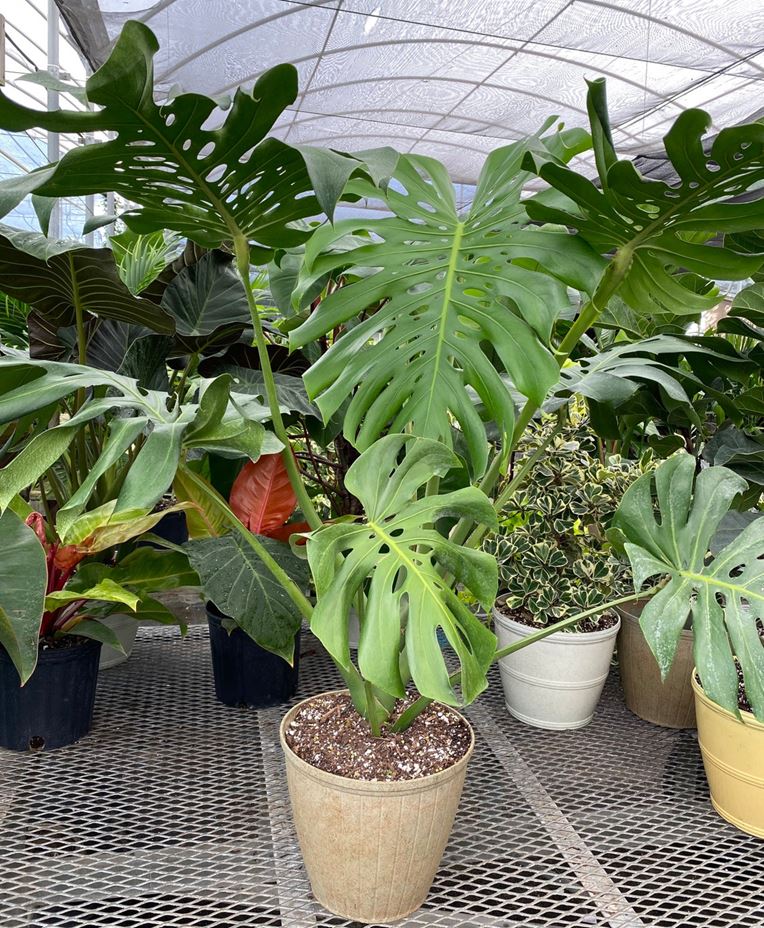
Contents
- Growing habits
- How long does it take Monstera to mature?
- Monstera mature leaves appearance
- 1. Species with entire fenestrated leaves (no splits)
- 2. Monstera with fenestrated and split leaves
- 3. Species pinnatifid leaves (split) only
- 4. No fenestration or splits
- 5. Species whose leaves don’t change
- Mature Monstera plant care and growth conditions
- 1. USDA hardiness zone
- 2. Temperature
- 3. Humidity
- 4. Light
- 5. Soil
- 6. Watering
- 7. Feeding
- 8. Pruning and grooming
- 9. Repotting
- 10. Support
- Buying a mature Monstera tips
Growing habits
Mature Monstera grows as an epiphyte, i.e., it grows on the lower and middle trunks below tall rainforest tree trunks. Here they will get more light without having their support structure.
These plants won’t grow to maturity without having a place to climb except Monstera deliciosa, which can mature both as terrestrial (growing on the ground) or a rupestral (growing on rocks). The rest will only flower and have fruits as epiphytes. But some may mature growing on rocks or cliffs.
Baby Monstera or seedling and the juvenile will grow as a terrestrial creeper until it gets a climbing place.
Once they get a tree trunk, they will start climbing, and the stem portion linking it to the ground will die or rot. So, they will break the link to the ground, becoming an epiphyte.
In some cases, the plant may send its long aerial roots to the ground, retaining its connection but not with the stems. These roots may grow as long as 65 to 98 feet (20-30m) and will not branch until they reach the ground in some species.
The reason for breaking contact with the ground may be to evade terrestrial predators from its flowers or fruits.
How long does it take Monstera to mature?
The exact duration to maturity varies from one species to another, just as Monstera growth rates vary. But most Monstera species will take approximately 1-3 years to mature, counting from the day you first notice fenestration.
That said, some of the slowest growing species like Monstera lechleriana may take up to 6 to 8 years to mature while in their natural habitat
On the other hand, you will get those that take about 1 ½ years to mature, such as Monstera obliqua.
Last but not least, the exact duration your Monstera takes to mature depends on growing conditions (light, temperature, and humidity), care (watering and feeding), and giving it a place to climb.
Monstera mature leaves appearance
Depending on the species you have, the leaves may have holes (fenestrations), splits, or remain entire. Also, some species may have leaves similar to the juvenile stage. Let us see each of these categories and give you examples:
1. Species with entire fenestrated leaves (no splits)
Some Monstera species will have adult leaves with fenestrations or holes, but their margin will remain entire, i.e., they are not split or pinnatifid. Most of the species in this category belong to the section Monstera. They include:
- Monstera adansonii
- M. acuminata
- M. adansonii var. laniata
- Monstera siltepecana
- M. acacoyaguensis
- M. lechleriana
- Monstera obliqua
Some mature leaves, such as lechleriana and var. laniata, may lack the holes.
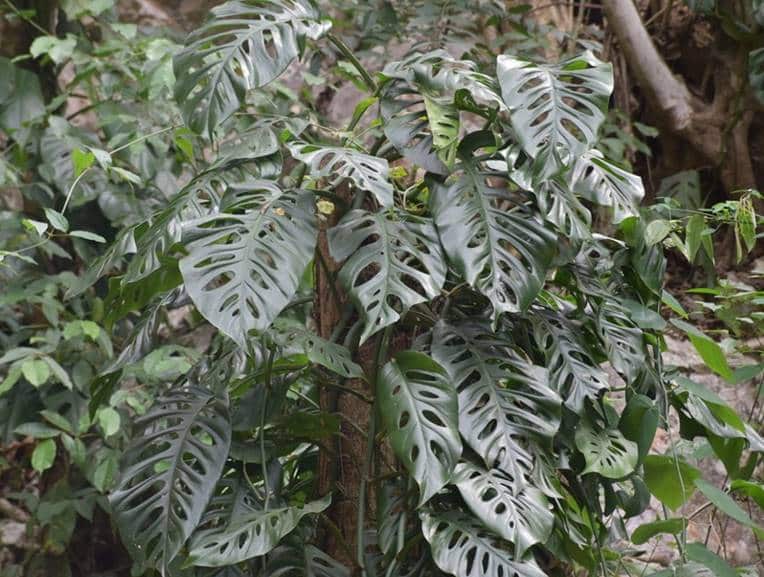
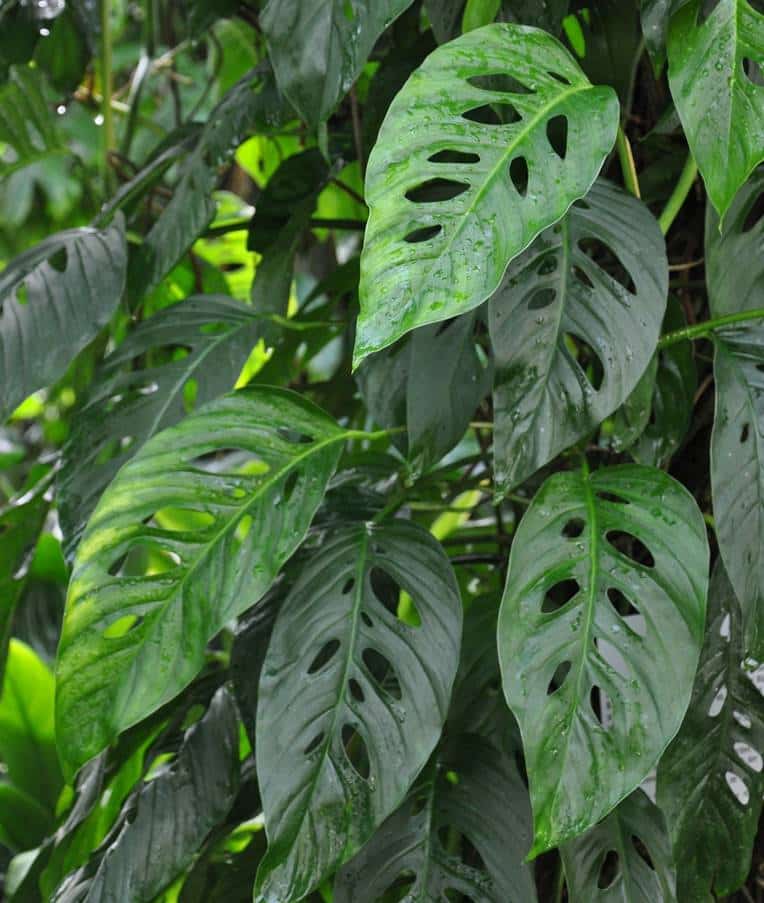
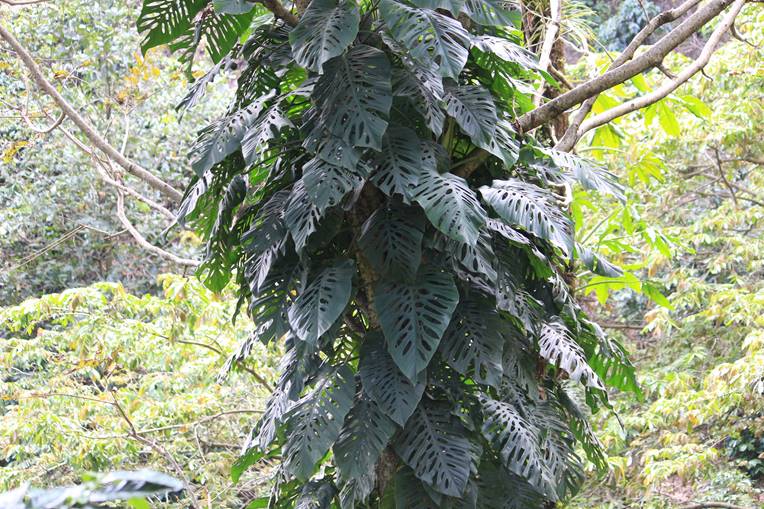
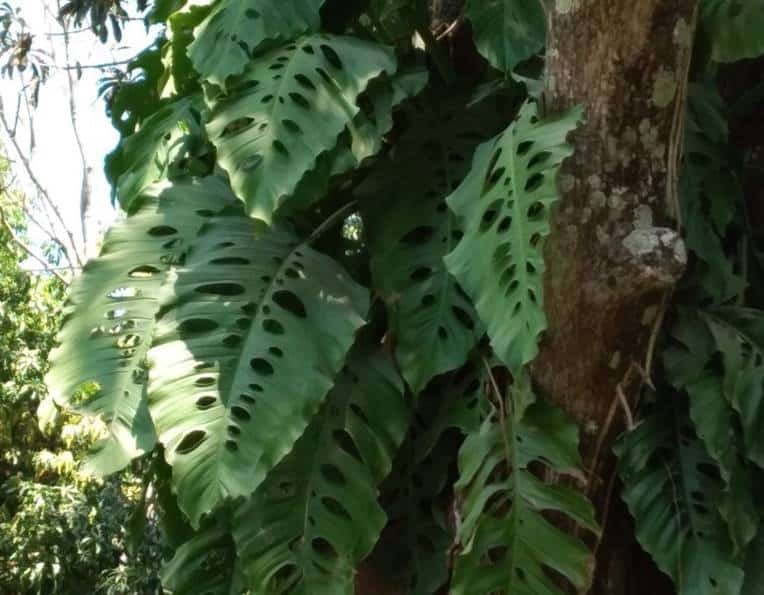
2. Monstera with fenestrated and split leaves
Some species have both holes and split leaves. Common species whose leaves fall in this category include the following:
Pinnatipartita leaves have mainly split. But you may notice a few smaller holes, which are rare.
3. Species pinnatifid leaves (split) only
Not all Monstera plants have holes or fenestration. Those that don’t have perforations but have split or are pinnatifid include:

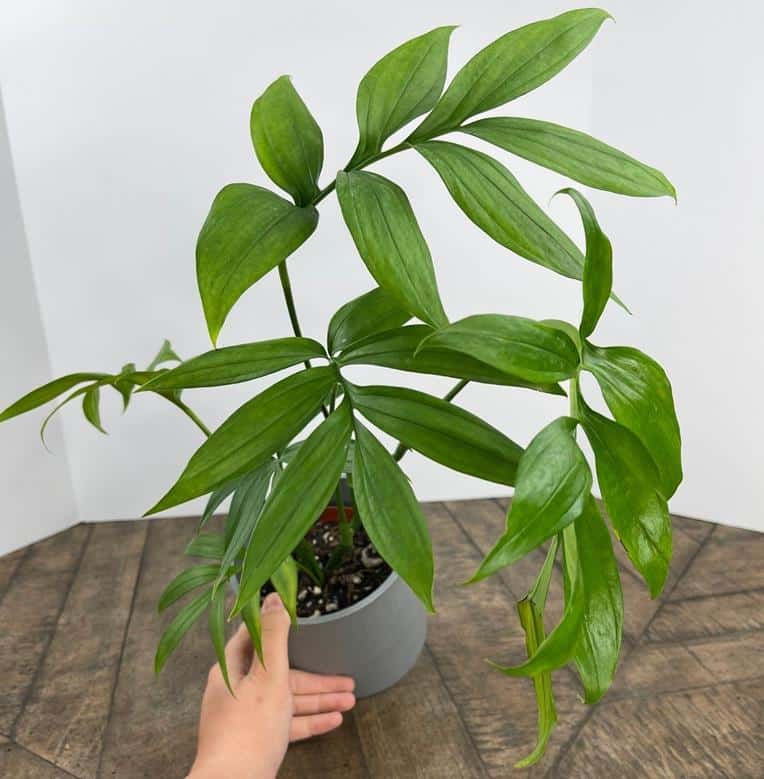
4. No fenestration or splits
Surprisingly as it may sound, not all Monstera species have splits or fenestration. Some don’t. One typical example is M. Standleyana, including the Albo and Aurea variegation.

5. Species whose leaves don’t change
M. Peru, or what others call Monstera karstenianum, isn’t an accepted species. One unique feature it has is leaves that remain the same in the juvenile and adult stages.
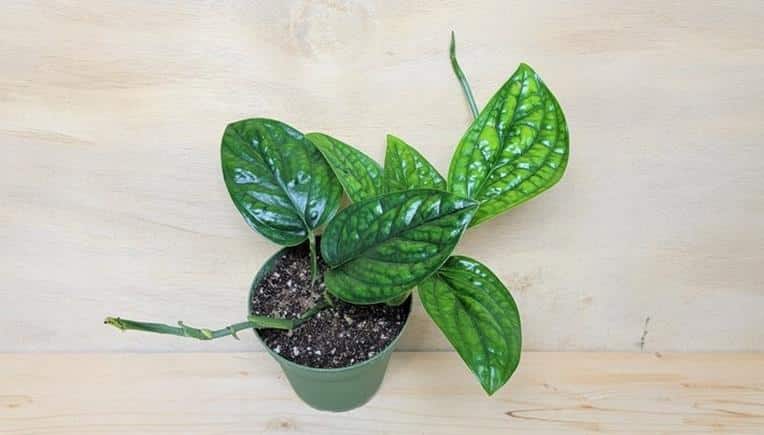
Mature Monstera plant care and growth conditions
Caring for adult Monstera is easy. You need to provide them with a warm, humid area with bright indirect light. But you must know how to properly water and feed them. Let us look at the details.
1. USDA hardiness zone
USDA hardiness zone for Monstera plant is 10b to 12. Only in these zones can you grow your plant outdoors. Frost or freezing temperatures will damage or kill your plant.
2. Temperature
These plants prefer a warm area with an optimum temperature of 65 to 85 degrees Fahrenheit (18 to 29°C). Low temperatures will slow growth. Avoid cold drafts, air conditioning, root heating vents, or places with drastic temperature changes.
3. Humidity
They love a humid area. So, keep the relative humidity at 50% or more for the best growth. If too low use a pebble tray, move plants to your bathroom or kitchen (rooms with higher humidity) or mist them several times a week.
However, to effectively provide ideal humidity, you need a humidifier. It will also ensure you are comfortable. We use LEVOIT Humidifiers Top Fill, 6 Liter, Cool Mist since our room is relatively large. It is quiet, runs for up to 60 hours and is connectible to third-party voice assistants.
4. Light
In the wild, they receive filtered light from tall tree canopies. So, give them bright, indirect light. Medium to low may work for non-variegated plants.
If your light is too little, buy grow lights. Relassy 15000Lux Sunlike Full Spectrum Grow Lamp is a good pick. It has a long lifespan (50,000) and comes with a clampable gooseneck stand. However, there are other good brands too.
On the other and, you have to avoid direct sunlight. Otherwise, it will cause sunburn.
5. Soil
Give these plants a slightly acidic to neutral (pH 5.5-7.5), well-drained, chunky potting mix high in organic matter. You can buy an aroid mix (see Etsy.com) or make one at home. Ensure it holds moisture, drains well, and has a lot of organic matter.
A mixture of peat moss, perlite, potting soil, worm castings, and some bark chips will work. You can use Coco coir in place of peat moss and pumice instead of perlite.
6. Watering
Monstera needs the soil to dry a bit in-between the watering session. We recommend watering when the top few inches or 50 to 75% of the potting mix feels dry.
It may be after a week in growing seasons and bi-weekly in winter or fall. The exact time depends on your conditions and other factors. Please, don’t follow a watering schedule. Instead, test the soil.
To test the soil, you can either use your finger or a moisture meter like XLUX (best rated). Water when the soil moisture meter reading is in the dry zone (three or less) or when the potting mix feels dry up to the first knuckle of your finger.
Last but not least, watering will involve slowly saturating the soil until some water flows from drainage holes. Discard any that collects on the saucer.
7. Feeding
Feed your plants monthly in spring and summer using an all-purpose, balanced liquid houseplant fertilizer. A 10-10-10 or 20-20-20 will do the job. Don’t feed immediately after repotting or during winter.
I biweekly feed all my Monstera plants with Miracle-Gro Indoor Plant Food (Liquid) (NPK 1-1-1). This fertilizer feeds your plants immediately and is unlikely to burn them if used as recommended.
However, you are free to use any other good brand including Bonide Liquid Plant Food 10-10-10 or even a slow release formula.
8. Pruning and grooming
Use a sharp, sterilized pruning knife or scissor to cut any dead, diseased, or damaged leaves. Also, use a soft piece of cloth or microfiber gloves like Evridwear to wipe dusty leaves.
During the growing season, you can cut a few branches and stems from controlling the shape of your plant and encouraging branching or fuller growth.
9. Repotting
Monstera plants need repotting every 2 to 3 years or if rootbound. Before that, you can replace the top few inches of the soil with one rich in organic matter.
When repotting, go for a pot 2 to 3 inches wider and deep enough to accommodate the whole plant.
Lastly, we recommend repotting in spring or summer. For the non-growing season, only repot if it is essential, especially in the case of Monstera root rot.
10. Support
Except for the Monstera deliciosa that may mature without support, the rest need staking. Use a cedar, bamboo, moss pole, trellis and train them to climb. See more on Monstera moss pole, trellis and how to stake it.
Outdoors, you can let these plants climb on trees, fences, arbors, and so on. But ensure the place has no direct sun or gets filtered sunlight.
Buying a mature Monstera tips
If you prefer buying a mature Monstera plant, our advice is to consider the size. Avoid any plant that is more than 3 to 5 years old. Why? Because it will have lost the lower leaves and will only have stems.
If the owner prunes it, you don’t have to worry about the age. But you expect it to have a massive rooting system.
If you want a mature Monstera, try Etsy.com or eBay. Also, you may find it on Facebook page groups or Instagram. You will find people willing to sell or exchange their mature plants.





Leave a Reply